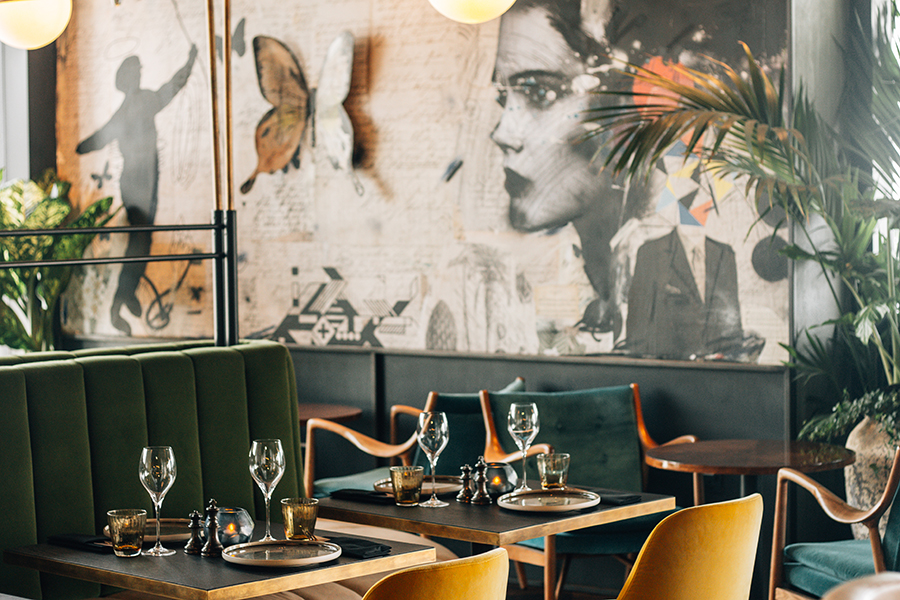
How much technology is too much technology? Tech has inevitably become as standard and mundane as the air we breathe, but it is the where, how and why, that determines its utility for any business today.
While it is known to make life easier and more convenient, people must realise that an inundation of technology combined with a lack of study and an unclear objective can be expensive, counter-productive and in some cases, catastrophic. It is easy to get carried away with the cool emerging trends, high-tech inventions that are dominating every industry, including retail. But the question every business leader needs to ask is, ‘why do I need it and what am I going to gain out of it?’
Dubai-based London Project is a multi-faceted experiential restaurant nestled in The Bluewaters Island right by the goliath Dubai Eye overlooking the Arabian Gulf and the skyscrapers of Jumeirah Beach Residences beyond. The USP of this restaurant is its location, the elevated casual dining approach, and the unique experiences that are offered to its customers be it with the out-of-this presentation of cocktails, the importance given to artistry, or the effort taken by the restaurant staff to make its customer’s go ‘wow’ with the gimmicks and elements.
And none of these experiences have anything to do with technology. Just good ol’ networking and bonding. “For a venue like ours, we want the technology to be behind the scenes. We wouldn’t want it to be an overly technological experience where you need to be playing with your phone or iPads or even feeling like technology is driving your experience,” said Andrew Morrow, Operations Director at The London Project.
However, this doesn’t mean that they are old school and don’t believe in technology integration within their restaurants. The way it is used in combination with data, which they gather organically by speaking to their customers, is with the sole aim to improve its customer’s experience.
“For us, it’s about controlling the data that’s coming in. Our reservation system and POS system working in conjunction with each other to be able to build a map around our guests and gather information on how regularly they visit, where they like to sit etc. We do not run a loyalty program but we do keep a database of our customers using which we connect, reach out and communicate with them in a more traditional sense,” he explained.
However, different restaurant concepts would require automation and digitization at different stages and fronts with varied levels of assertion. For instance, a fine dine or high-end restaurant would have very limited involvement of technology that meets the eye compared to a fast-food chain where automated processes would dominate the customer’s journey in order to make it more cost-efficient and timely for the joint.
“Technology and robotics will hit different aspects of our industry differently. As you get higher up in the spend, the human element will 100% dominate over the digitized format. However, in the mid-range and lower end market, digital has a lot of developments to go in order to be truly effective. But it can definitely help in the improvement of the overall experience,” he explained.
But, even in the mid to lower strata, it is important for robotics to not replace the essence of the hospitality industry, which is the staff. Customers would want to be greeted and served by people, even if automation can add to the gimmicks of it. In fact, robotics could have an important role to play as an ongoing cost management tool, used in the back-end of hospitality, in the kitchen to help as an assistant to the chef for the preparation of basic food items, and removing any kind of dangerous human elements.
Speaking of kitchens, the trend that rose to power last year was Cloud Kitchen i.e. commercial facilities purpose-built to produce food specifically for delivery. But is the concept a temporary fad or can they work even post-pandemic?
Well, it could be a blessing in disguise for restaurants who gain most of their revenue from deliveries. Many restaurants in Dubai are seen with a fleet of delivery bikes parked in front and a handful of customers seated inside. It might benefit them to shut shop and avoid all the overhead costs of rent, electricity, design, and interiors to adopt a cloud kitchen-based business model.
“Certain restaurant concepts become much profitable through their home delivery systems than their dine-ins. If you think about the costs to that restaurant owner to buy the chairs, the design, and POS system, all those costs go into serving the 10 customers that are dining in while 80% of their revenue is coming from the motorbikes that are sitting out and spoiling the view for their customers that are sitting in,” he explained.
“Now with the cloud kitchen, there is an actual benefit for those operators, where they can deliver to the market where they are making most of their revenue from and close down their front-of-house operations, which would immediately cut costs,” he added.